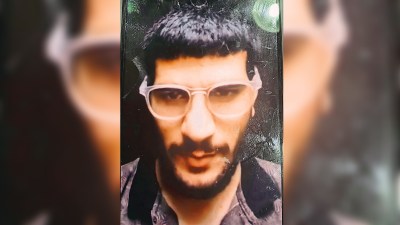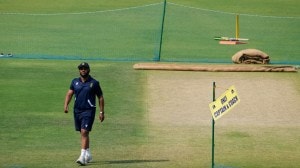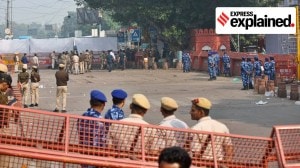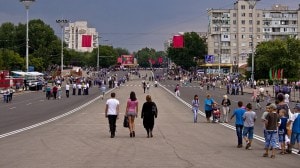President of the ‘Other India’
When Kocheril Raman Narayanan was born in February 1920 in a small thatched hut in the village of Perumthanam in Kerala, not even an oracle ...

When Kocheril Raman Narayanan was born in February 1920 in a small thatched hut in the village of Perumthanam in Kerala, not even an oracle could have predicted the kind of future he would have. He was the fourth of seven children. His father, although respected as a traditional physician, was desperately poor. And the family belonged to the Paravan caste. In short, the man who would become the future President of India was born an impoverished dalit, far from the corridors of power, and decades before notions of affirmative action became the norm.
How did this happen? As we pay tribute to him, and recall his contribution and legacy, this is the question we need to ask. Certainly, when the journey began, the obstacles were almost insurmountable. At six years Narayanan began to learn to read and write, not in an elite school, but at the Lower Primary School in village Kurchithanam. The school was 15 kilometers from his home, and he walked that distance everyday wading through paddy fields. Finding the money to pay the fees was a constant battle. Buying books was another. It is said that his father’s elder brother used to borrow books from other students, copy them down, and give them to Narayanan.
There were two factors which saw KRN through in those early and exceptionally difficult years. The first was grit, the sheer tenacity to hang on and not to accept defeat. The second was, undoubtedly, personal brilliance. A merit scholarship enabled him to complete his intermediate degree from Kottayam. And when he did his Masters from the University of Travancore, he stood first in the University, and became the first dalit to ever get a first in that institution. Later, a J.R.D. Tata scholarship enabled him to study under the legendary Harold Laski at the London School of Economics.
These aspects of KRN’s life became much better known after he became the President of India. But officially released curriculum vitae of people when they are at their pinnacle often blur the hardships and deprivations of real events as they actually unfold. To fully appreciate the odds that Narayanan actually dealt with we need to understand the degree to which the fact of being a dalit entailed overt acts of social exclusion. Fighting poverty was much easier than fighting social prejudice. In the incorrigibly hierarchical society of India, to be at the bottom rung of an unfair social ladder, was a handicap that only those who were at the receiving end could internalise in all its humiliating magnitude. Gandhiji, who always wanted to co-opt Dr. Ambedkar, once said that he fully understood the anger and despair of the dalit leader. Despite being the apostle of non-violence, the Mahatma went so far as to say that he could understand why a dalit could be provoked into violence by such an unjust system.
To the credit of KRN, while he must have deeply resented social discrimination, he did not become irremediably bitter. In London, he worked actively for the India League under V.K. Krishna Menon. He contributed too to the Social Welfare Weekly brought out by K.M. Munshi. And when, on his return to India, Jawaharlal Nehru offered him entry into the Indian Foreign Service, he gladly accepted.
Although somewhat eclipsed by his later achievements, KRN’s career as a diplomat was exceptionally successful. He was India’s Ambassador in Thailand and Turkey, and far more significantly, our chief envoy in China and in the United States during a difficult and challenging period. One of the reasons for his success-and this was apparent to all who knew him-was that he was an erudite but gentle interlocutor, clear on his brief but willing to be a good listener. Even when unyielding, he was always ready with a winning smile.
KRN’s career in public life began after he retired from the Foreign Service in 1978. After a three year stint as Vice-Chancellor of Jawaharlal University in Delhi, he fought and won three successive general elections to the Lok Sabha in 1984, 1989 and 1991 representing the constituency of Ottapalam in Kerala. In 1992 he was unanimously elected as Vice-President of India, and in 1997 he moved to Raisina Hill as the tenth President of the Republic of India.
But all through this extraordinary career graph in politics, and, indeed, throughout his life, there were three aspects to his personality which exercised a consistent and defining influence. The first was an abiding interest in political theory and economics. I recall on one occasion, when I had gone to Rashtrapati Bhavan for the launch by him of the Malayalam translation of my book on the Indian middle class, he turned to me with the self-effacing humility which was his hall mark, and asked: ‘I wonder if I could ask you for some advice?’ Naturally, I said I was entirely at his disposal. He had put together a collection of his speeches and wanted me to go through them. For me it was a rewarding experience. Several of them were of a quality to find place in the best academic journals. A great many dealt with what was his enduring area of interest, democracy and development. Readable yet erudite, they were written with transparent conviction and a deep sense of personal commitment.
A second aspect was his ability to be a part of the system and yet not be entirely co-opted by it. To my mind, he remained constantly aware of the duality of India where, beyond the pageantry and pomp of the high office he occupied, there was the ‘other’ India, of the dalits and adivasis, the minorities, the poor and the dispossessed. He never forgot that he belonged to that India, and was conscious that while much had been done, much more needed to be done to make these segments a part of the mainstream. Many of his speeches, on which he worked hard himself, dealt with this theme, and it was a refrain in his private conversations too.
A third feature was his personal affability. He greeted people warmly, had very few of the angularities of the powerful, spoke softly, had a ready smile, and treated people with respect. It is amazing how rare some of these qualities are in the powerful, and KRN always came across as a refreshing and reassuring contrast.
Towards the end, KRN was in indifferent health. Once, while he was still at Rashtrapati Bhavan, he smilingly told me how he kept feeling that the strength was ebbing out of him. But he still made the effort to be with people he liked. One of the lasting images I have is of him at a recent party for Lord Meghnad Desai in Delhi. At one point, Meghnad and Dilip Padgaonkar began to sing an old Hindi film song, and invited KRN to join in. With effortless grace he took their hands in his, and while he did not sing, his smile said it all.
The writer, an author and a diplomat, is currently the Director-General of the Indian Council for Cultural Relations. Email:pavankvarmahotmail.com





- 01
- 02
- 03
- 04
- 05


























